Netsuke – 100 miniature masterpieces from Japan
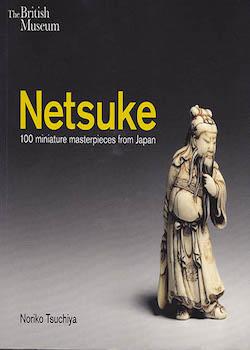
By Norio Tsuchiya
The British Museum
2014, 224 pages
ISBN 978-0-7141-9481-0
Review by Sir Hugh Cortazzi
Netsuke, as this book explains, were ‘practical fashion accessories worn by men of the Edo period (1615-1868).’ Japanese traditional dress had no pockets and men had to find a way of carrying their money and other accessories. These were attached to the sashes, which kept their clothes in place by means of netsuke, which were a form of toggle. They are often found attached to inro (portable medicine cases) but netsuke were used with all sorts of sagemono (hanging things).
When the globetrotters began to arrive in Japan after the Meiji Restoration of 1868, they were fascinated by the exotic character of things Japanese. Like tourists today they wanted to take home some of the strange objects they saw in the souvenir shops (kottoya). Netsuke immediately took the fancy of the visitors. They were often of exquisite craftmanship and they were small. This was a valuable consideration if, as was often the case, they were going on to China and other parts of Asia.
Japanese craftsmen soon realized how popular netsuke were with the tourists and to meet the demand the craftsmen involved developed and expanded production. All sorts of new netsuke were carved often primarily as ornaments.
The British were particularly avid collectors. The British Museum has some 2,300 netsuke. The hundred selected for this book are accordingly only a fraction of the museum’s stock, but they are representative of the various types of netsuke made in Japan.
Norio Tsuchiya explains the history of netsuke and describes the different materials used to make them including ivory and various kinds of wood. She also gives some account of artists and carvers involved in their manufacture and has usefully added a section on some of the well known signatures that collectors will encounter.
The majority of netsuke are, she explains, katabori or ‘carvings in the round.’ The subjects of such netsuke ‘range from human figures and animals to plants and still-life objects.’ Other types of netsuke are sashi which are ‘longer and slender’ and manju which are so-called because their round flat shape suggests a manju which is ‘a round flattish rice-cake filled with bean-curd.’
The 100 netsuke chosen for this book include carved figures of humans, ‘immortals,’ ghosts and supernatural beings, masks, animals and various manju objects. The seven images, which I have selected from the book, are ones which particularly attracted me. I hope that this subjective selection may tempt readers of this review to buy and enjoy this little book.
Four katabori –
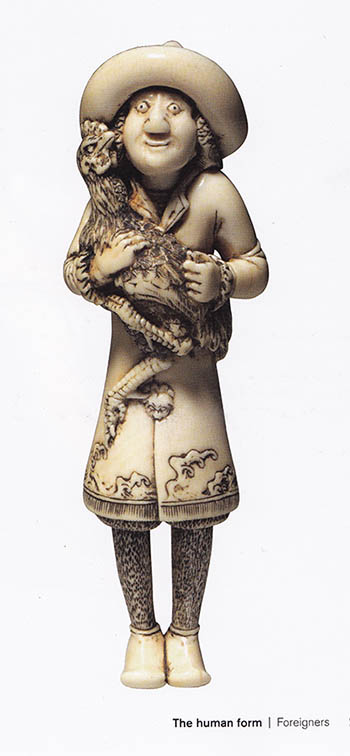
image copyright on Trustees
of the British Museum
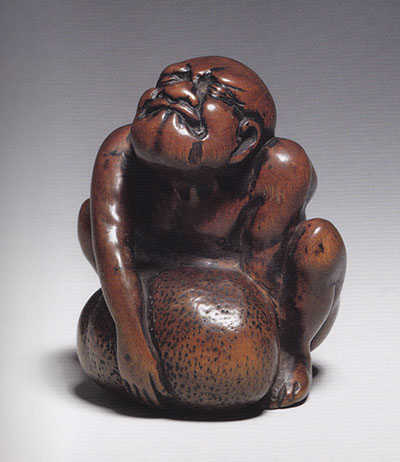
image copyright on Trustees
of the British Museum
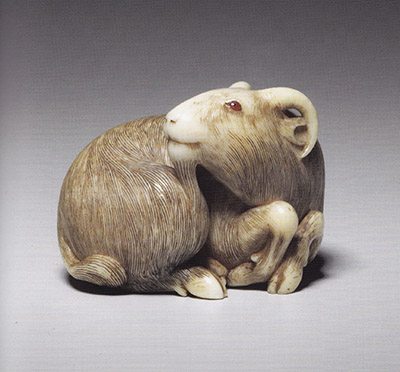
image copyright on Trustees
of the British Museum
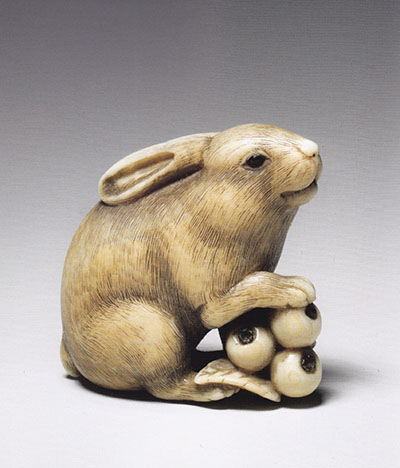
late 1700s – image copyright on
Trustees of the British Museum
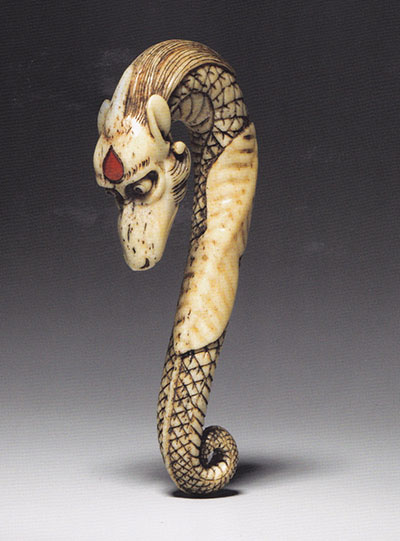
copyright on Trustees of the
British Museum
A manju –
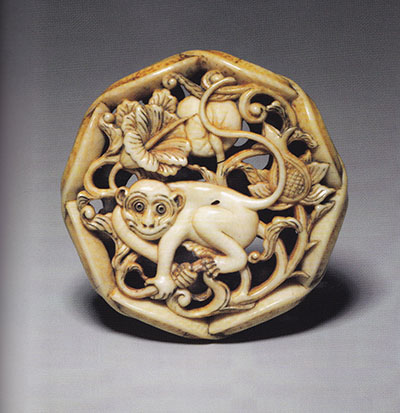
image copyright on Trustees
of the British Museum
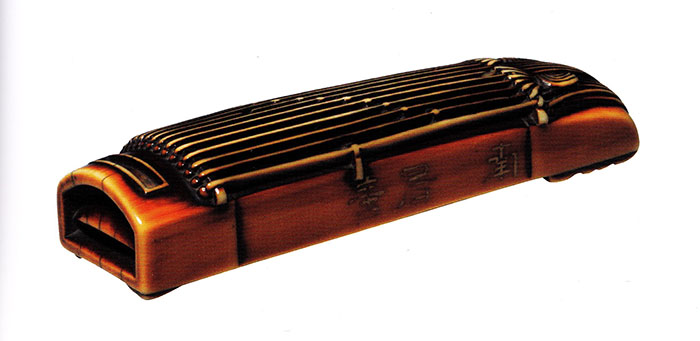
Trustees of the British Museum

